
Get the Flash Player to see this player.
2001 World SuperSport Shootout, Part ITorrance, California, February 9, 2001 -- MO had a deep thought recently -- really, we did. It was a sad day, for sure, but one prompted by our readers when you told us to quit ditzing around on the racetrack and make our 600cc test all about real-world riding instead of track performance like we often do. "What blasphemy is this," spouted Managing Editor Brent Avis, "have they all gone mad?"
The problem is that ranking sportbikes from quantitative times is easy and, more importantly, it's definitive: ride 'em, go fast, pick the fastest. Minimal disputes, few flames, no thinking. And, equally pertinent to us at MO, it's fun.
Truth be told, the numbers way is also easy on us: Sportbike riders are the most judgemental, most cantankerous pain-in-the-feedback-ass group out there, bar none. No other group even comes close to the level of whine a Sportbike Squid can proffer forth. Believe us, after seven years and millions of posts and e-mails from whining squids, it gets old.
But we digress. Sales figures show that the fastest bike is generally the one that has the most advertisements about winning races and, consequently, sells the best. So, a purely street-oriented test would neglect this clearly significant aspect of the numbers game. Conversely, y'all made it explicitly clear that the Old Way was lame.
Many of you realized that you'll never drag knee on a racetrack (or the street, for that matter) and want to base your buying decision on something that more closely resembles riding situations that fall in line with your own. Thus, here was our bright idea: Similar to MO's Open Inlines winner Vs. Open Twins winner, we'll take the race bikes out first, rank 'em, and bring the top two bikes over to test against the remaining "street" bikes -- the later being machines that are unchanged-for-2001, or those that are likely to be of second-tier status in the confines of a racetrack.
So here, now, you have Part One of MO's 2001 World SuperSport Shootout: The Race Replicas.
The contenders are Honda's new CBR600F4i, Yamaha's reworked YZF600-R6, Suzuki's fuel-injected GSX-R600 and Ducati's 748S (Part Two will pit the winner against Kawasaki's ZX-6R and Triumph's TT600).
They all look fine and dandy, some mildly racier than the others, but it takes more than close inspection of bodywork to discern each bike's true intent; unless, of course, you're one of those aforementioned Squids that just wants the fastest bike made so you can feel cooler than your buddies.
If that's the case, this story is over: Get the GSX-R600. It's the fastest track bike here, plain and simple, albeit it bests the R6 by a very narrow margin, it's Numero Uno Squidly Ride this year. So, you're done here, go play with the on-board racetrack videos and then tell the world how fast you aren't.
For the discerning consumer, the decision is harder. This class has become rather bi-polarized with some manufacturers choosing to produce a race-replica while others prefer a do-everything platform.
Somewhere more towards the "comfort" side of the scale rests Honda's CBR600F4i and, to a lesser extent, Yamaha's YZF-R6. The Honda underwent a host of changes that we already previewed, and it does a nice job of combining track styling and performance-based ergos with the sort of civility that makes it the consistent top-seller in this class. Well, everybody. Not surprisingly, the two bikes that are narrowly track-focused are Suzuki's GSX-R600 and Ducati's 748S. Both bikes have riding positions that are not uncommonly referred to as "torture racks" by people who only take things at face value without ever exploring the method behind the madness.
But of these bikes, only one makes the sort of triple-digit horsepower that's necessary to conquer the Supersport classes while the remaining bike does things its own way and makes about 15 horses less. But which of these bikes is best for you? Glad you asked, since we had a lot of fun, er, did a lot of hard work in trying to help you make your next buying decision. To really suck the marrow out of the bone that is World Supersport competition, it's important to remember that this is the class that many manufacturers hang their hats on. They sell more 600-class machines than any other. So, this is bread and butter time, folks. To that end, we explored the challengers at considerable length on both the street and the racetrack. Somewhere in all of this madness of logistics and mother nature eliminating our dragstrip runs (for now), we came out with a winner.
Fourth Place: Ducati 748S
A strange thing happened -- again. With all the changes to these Supersport bikes, Calvin still has a place in his heart for the Ducati even though it finished in last place. Calvin is, surprisingly, not alone this time, though. To say that more than a few testers praised the Ducati's chassis would be an understatement. It still has one of the best chassis around. This, however, is not a surprise, given its lineage to Ducati's own all-conquering 996. Our 748 was the "S" model which, compared to the stock bike, ups the ante with Showa suspension (complete with ti-nitride-coated forks), Marchesini five-spoke wheels and a rake-adjustable steering head. Tasty bits all, but they couldn't do anything to help the bike in the department that needs the most attention: the motor. As good as a bike's chassis may be, there's just no making up so much lost ground when all the other bikes are so close together, or far ahead as this case may be. This doesn't mean the Ducati is a bad bike, though. It has the sort of racetrack feel and precision that only the Suzuki comes closest to emulating. Only thing is, the Ducati requires a different riding style than the other bikes and quite a bit of money spent to bring the motor up to the levels that enable it to attain front-runner status in the World Supersport wars.
The Showa suspension required nary a moment of fiddling all day on the track, though we did prefer a few clicks less compression damping on the street. The original-fitment tires worked well -- some of the best in test, these Pirelli Dragon Corses -- and things only got better with the Metzeler race rubber at the track.
Other than a lack of motor, about the only thing we can complain about with the Ducati would be that we would like brakes that are a bit stronger. They required quite the firm tug to get things slowed down.
Handling and ground clearance was superb. If you touch anything down on the 748, your next ride will be either for the factory-supported World Supersport team or in the back of an ambulance. We loved the way the Ducati went about its business at the track, never letting you feel like you were anywhere near the bike's edge, but that you were always well taken care of by seignore' Ducati.
On the street, however, the suspension provided a ride that was just too stiff to consider covering any real distance. And the motor, even on the street, could have used a bit more oomph, though we unanimously agreed that it made the most beautiful noises of any bike here. About the only edge the Duc' has over its competitors, on the street at least, is in the visceral department. It turns more heads and tickles more senses than anything else. But track potential and sense-tickling are just not enough nowadays.
Third Place: Suzuki GSX-R600
"The racers here all like the Suzuki best," quipped Plummer after our testing was done, "but every time you rev it, it shakes so hard it feels like it's going to blow up! It's disconcerting, un-nerving and I just don't like it. After riding all the other bikes back-to-back with the Suzuki, I'd never buy this for a street bike." "True," counters Avis, "it does feel like it's going to blow up, but GSX-Rs never do. They're the workhorses of American club racing." Valid points, both, but at the end of the day two things remain: The Gixer shakes badly and vibrates harshly, not fun for longer rides, or even zips up to redline if you're sensitive to that sort of thing. Second, real racers go fastest on the Suzuki, the rest of us mortals don't. For this bike to be third is really a shame, but our readers (yeah, you, buddy!) wanted us to be more street-biased in our overall tally of things, leaving racers to read deep into our words to find their
perfect race day mount. And for track days, this bike is about as
good as they come from the factory.
Pumping out 103 horses at the rear wheel, Suzuki's latest 600 makes the sort of horsepower that some open-classers made less than a decade ago. The motor is then wrapped up in a chassis that's second only to Ducati's 748 in terms of feel and feedback, but at a price that's significantly less. We loved the way the Suzuki felt at the track, with its precise manners on turn-in that were one-upped only by the bike's mid-corner feel, leading into full throttle application on the way out as the motor spun up to its 14,500 rpm redline. The Suzuki's mill, though it has the edge on the others at peak, seemed a bit flatter than the Yammie in the mid-range, coming off corners. Bottom-end power was right on line with the other contenders, and the transition from low to mid to top-end was littered with very few peaks or valleys of power that would ever threaten to break traction or excite pulses beyond the race track norm'.

Motorcycle.com presents an unrivaled combination of bike reviews and news written by industry experts
More by Motorcycle.com Staff









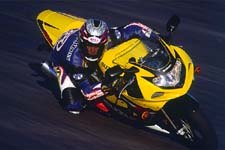















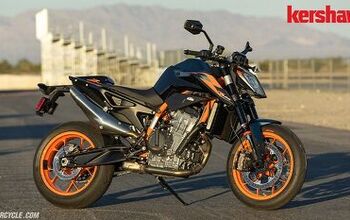
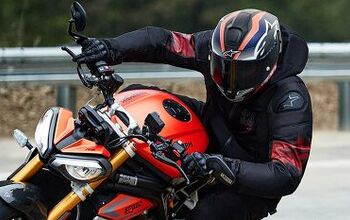
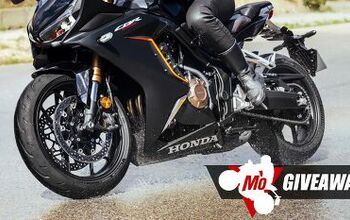


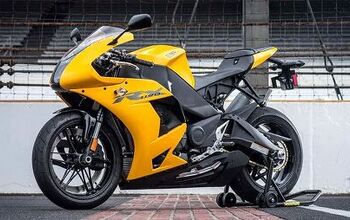




Comments
Join the conversation